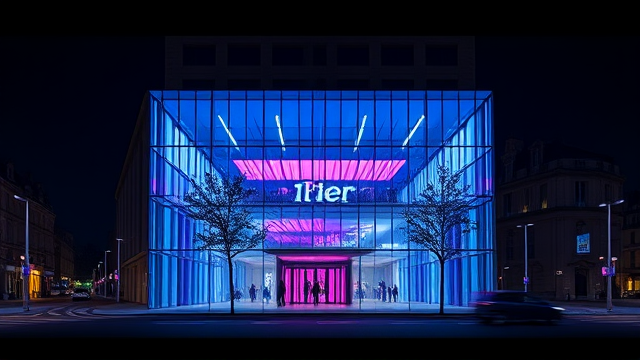Jean Nouvel's New Fondation Cartier Museum in Paris
Jean Nouvel’s transformation of a historic Haussmann building into the new Fondation Cartier museum is nothing short of cinematic, a masterful act of architectural curation where the past and present perform in a kinetic pas de deux. The building itself, once a stately relic of 19th-century Parisian order, has been reimagined as a shape-shifting stage, its glass facades and reflective surfaces creating a living, breathing entity that interacts with the art it houses and the city it inhabits.Launching with landmark shows, the museum immediately establishes itself not as a passive container but as a co-conspirator in the artistic experience, a concept Nouvel has explored throughout his career but never with such fluid theatricality. The genius lies in the interplay of light and transparency; as the sun tracks across the Parisian sky, the interior galleries are bathed in an ever-changing luminescence, forcing the contemporary pieces within—whether a monumental sculpture or a fragile installation—to constantly re-contextualize themselves against the backdrop of a moving cityscape.This is a deliberate subversion of the traditional white cube gallery, a rejection of the neutral vacuum in favor of a charged, dialogic space. One can draw a direct line from the provocative glass-and-steel interventions of the Centre Pompidou, which turned architecture inside out, to Nouvel’s work here, which dissolves the boundary altogether, making the street a part of the exhibition and the exhibition a commentary on the street.The inaugural exhibitions are curated to exploit this very dynamism; imagine a series of large-scale video works where the flickering digital images are superimposed over the reflections of passing traffic and pedestrians, creating a palimpsest of the real and the represented. It’s a bold statement in an era where museum architecture often oscillates between grandiose landmarking and timid contextualism.Nouvel, ever the auteur, refuses both, offering instead a building that is a meta-commentary on the role of the museum in the 21st century—is it a sanctuary, a theater, or a civic square? The Fondation Cartier argues it can be all three simultaneously. Critics will inevitably debate whether the architecture overwhelms the art, but that is precisely the point of Nouvel’s vision; it demands a conversation, a tension.The historical weight of the Haussmannian structure is not erased but strategically fractured, with new volumes and materials inserted like dramatic intertitles in a silent film, guiding the narrative without dictating it. This project will be studied not just for its formal beauty but for its philosophical audacity, challenging the very definition of what a museum should be at a time when cultural institutions are grappling with their public relevance. It is a testament to the power of place-making, where art, architecture, and urban life converge in a single, spectacular frame.
Latest News
In the grand, unpredictable symphony of popular music, a song's legacy is never just about the notes on the page or the voice in the recording; it's about the
36 minutes ago0 comments
The air in Kobe’s Glion Arena crackled with a rare, almost archival energy on that October night, a feeling that transcends the usual stadium roar—this wasn't
46 minutes ago0 comments
In a move that echoes the delicate diplomatic choreography more commonly seen in United Nations assemblies than in song contests, the European Broadcasting
4 hours ago0 comments
The venerable halls of Christie's, a temple to art and antiquity where whispers of gavels have consecrated the exchange of cultural totems for generations,
5 hours ago1 comments
The needle hasn't just moved; it has been ripped from the groove and cast in solid gold.
7 hours ago0 comments
In the grand, often predictable theater of pop music releases, where artists frequently trade artistic ambition for algorithmic certainty, Louis Tomlinson’s
7 hours ago1 comments
Let’s get one thing straight right off the bat, darlings—no, these gummies do not actually contain cornbread, which, let’s be honest, would be a truly wild
7 hours ago0 comments
In a move that sent the gossip-sphere into a full-blown frenzy, Georgina Badell recently took to her social media channels, not to address the swirling rumors
8 hours ago2 comments
It’s quiet here...Start the conversation by leaving the first comment.
